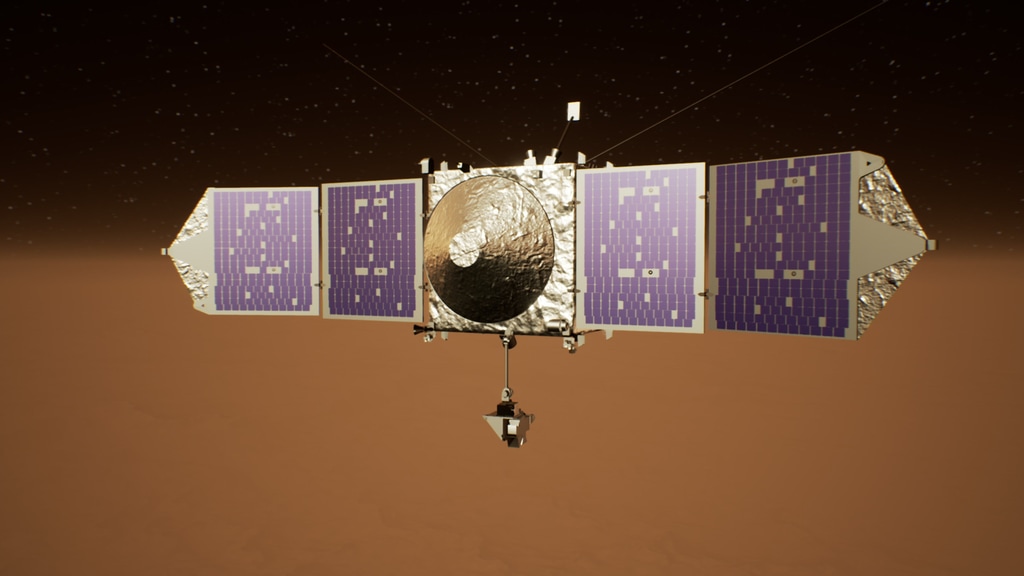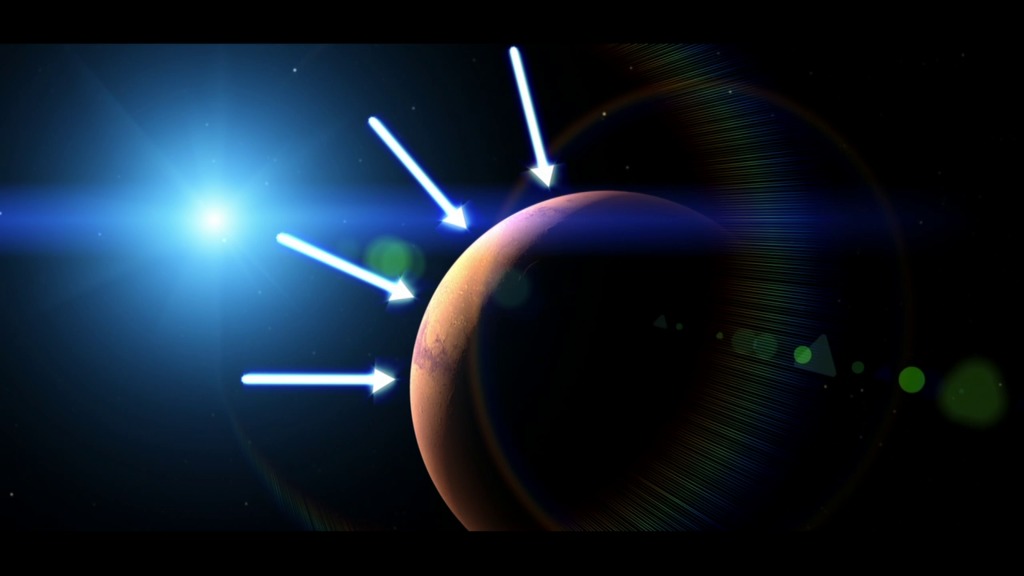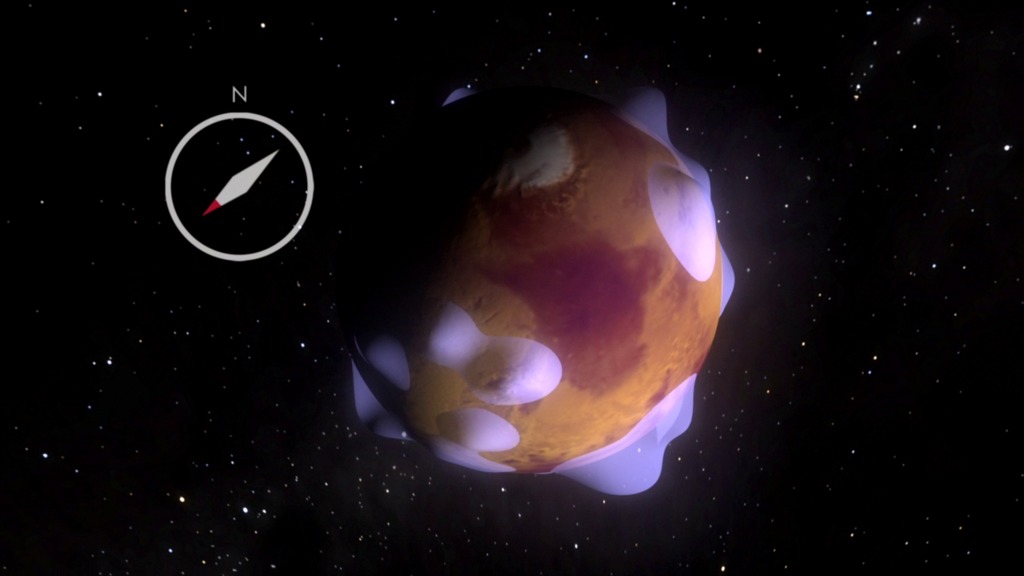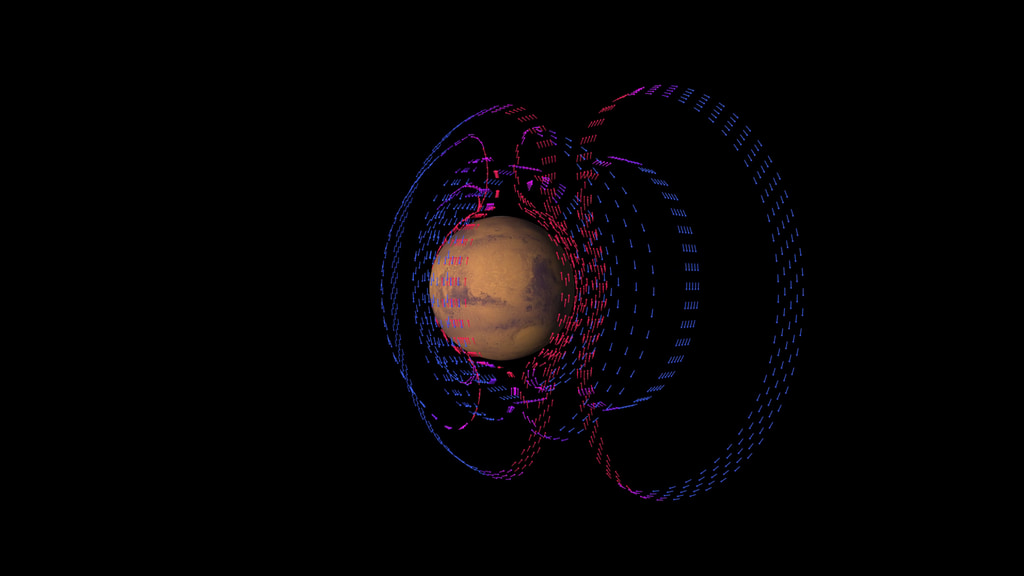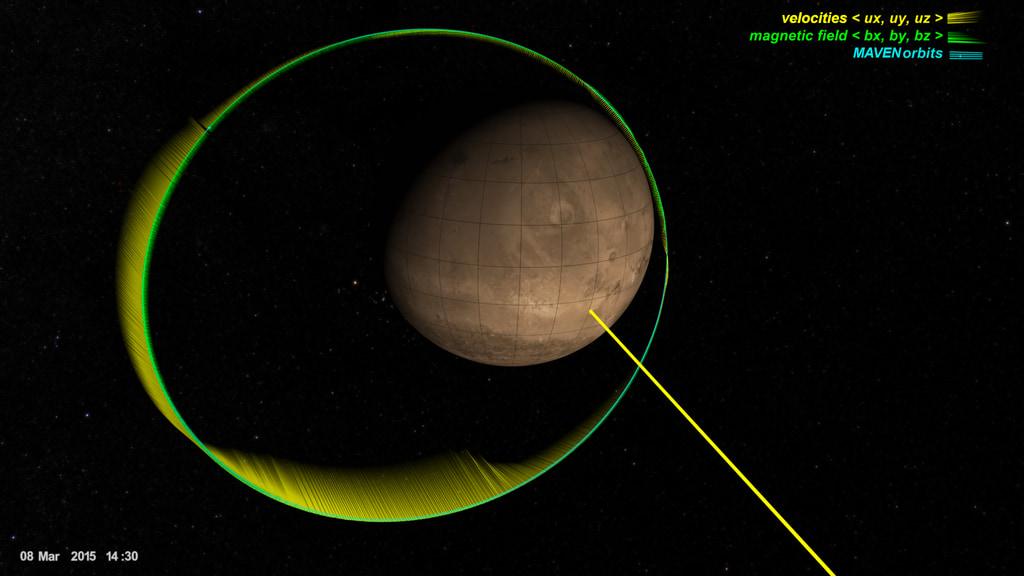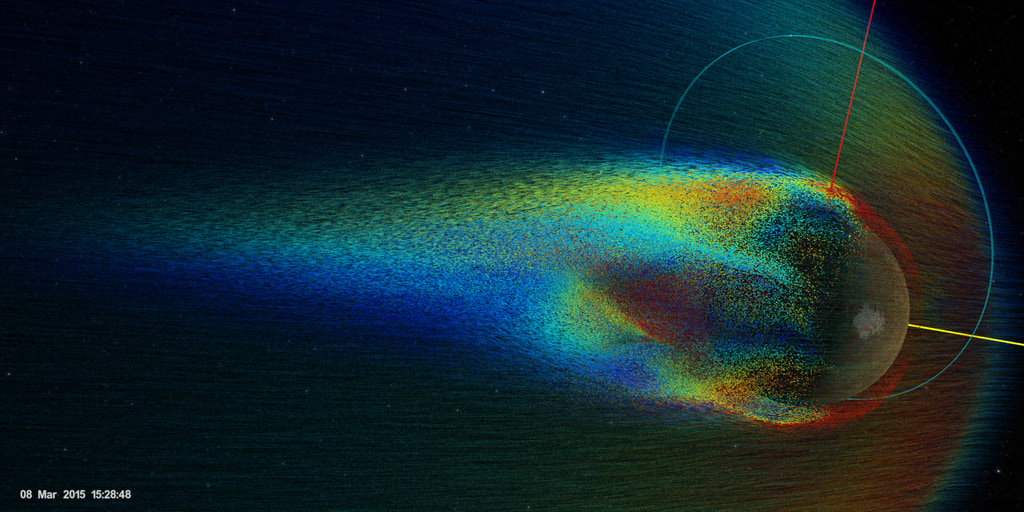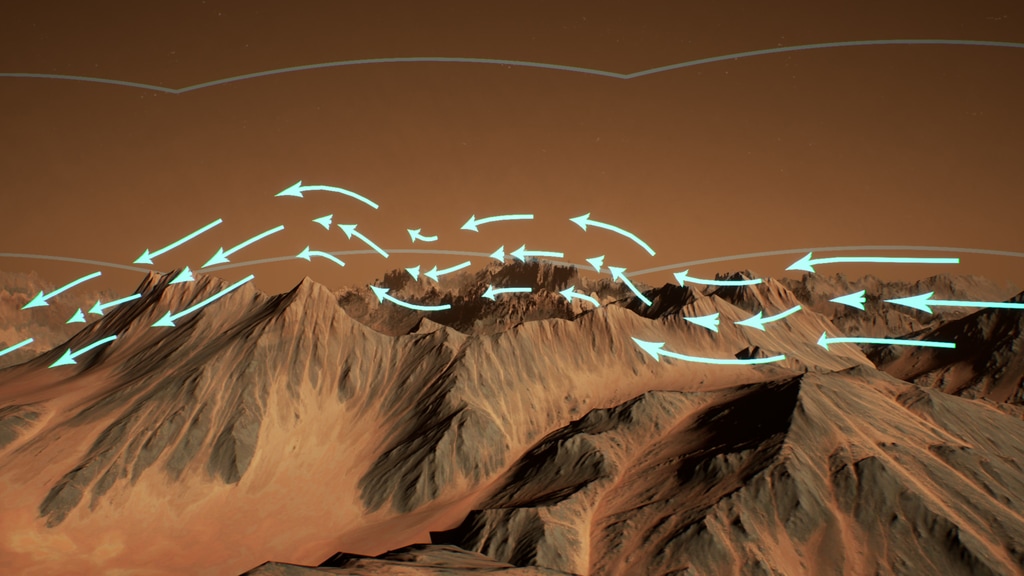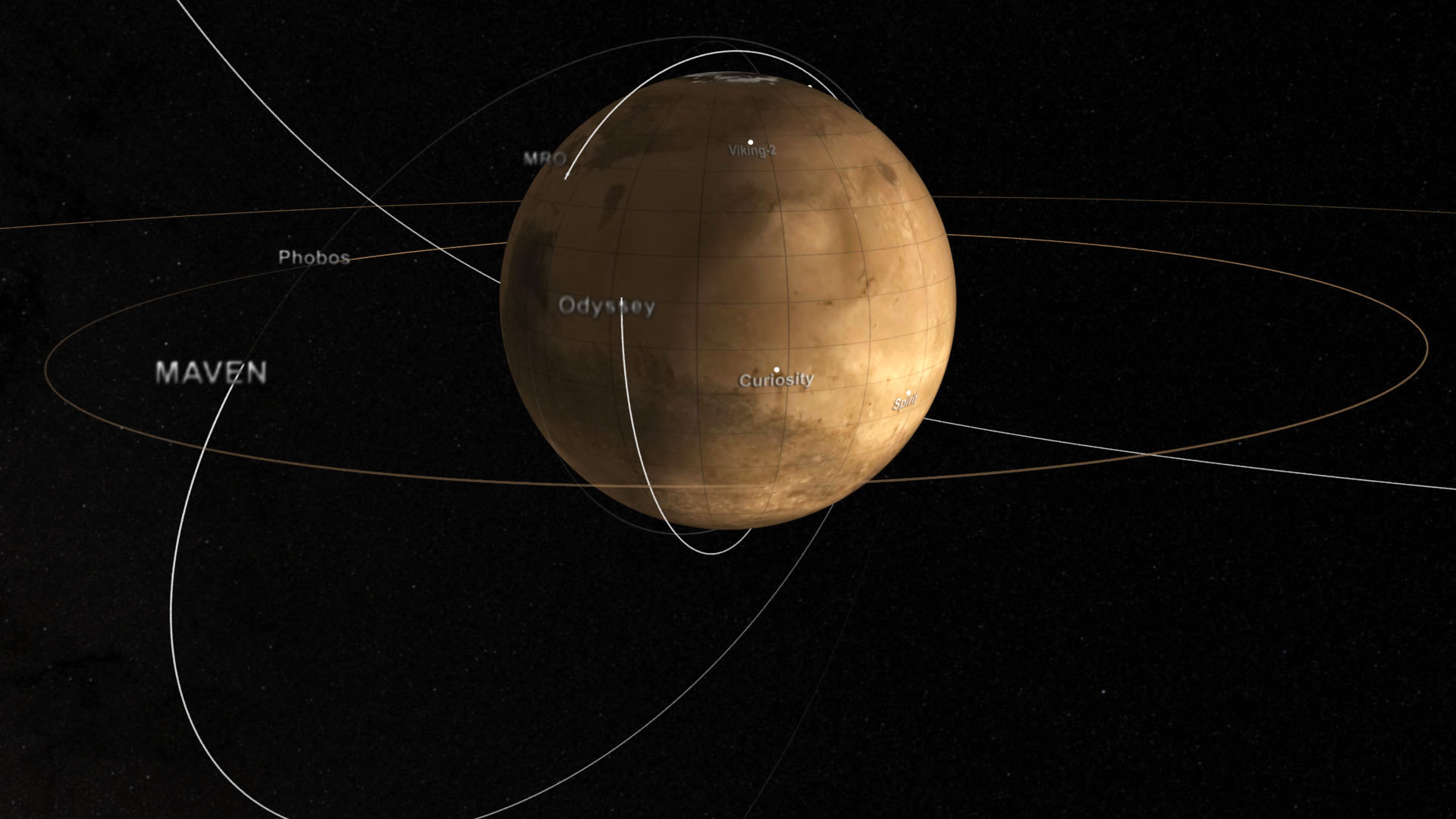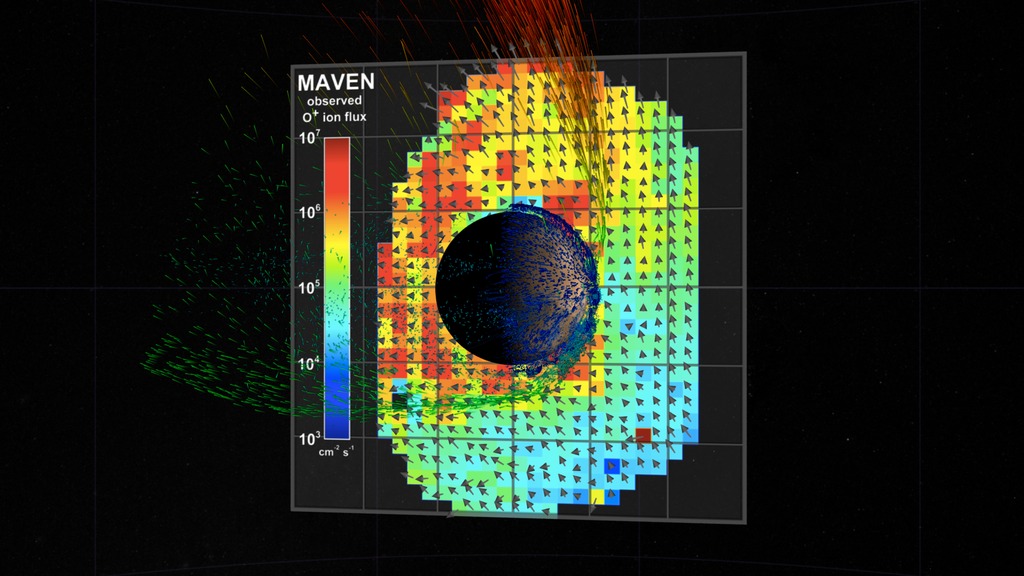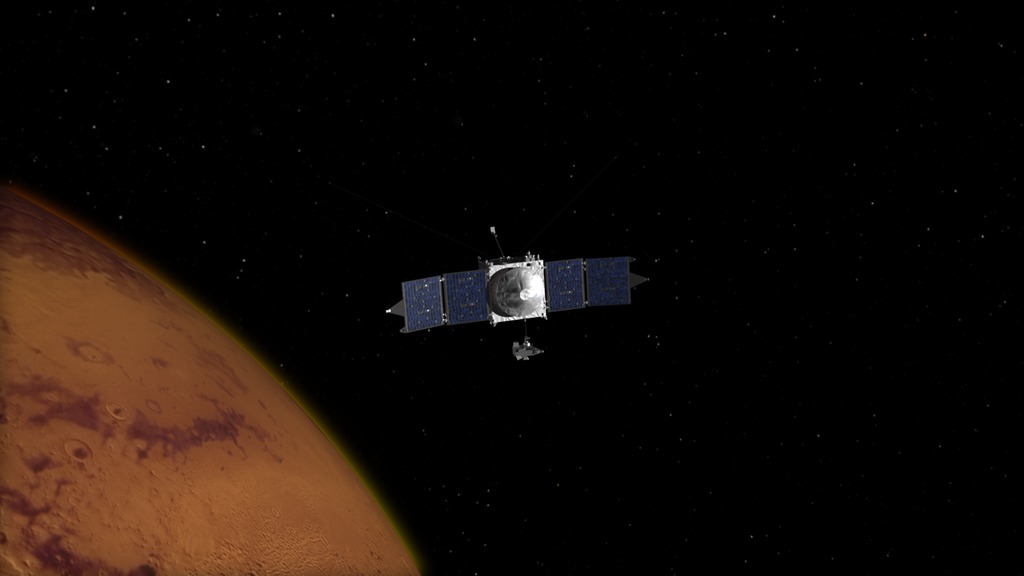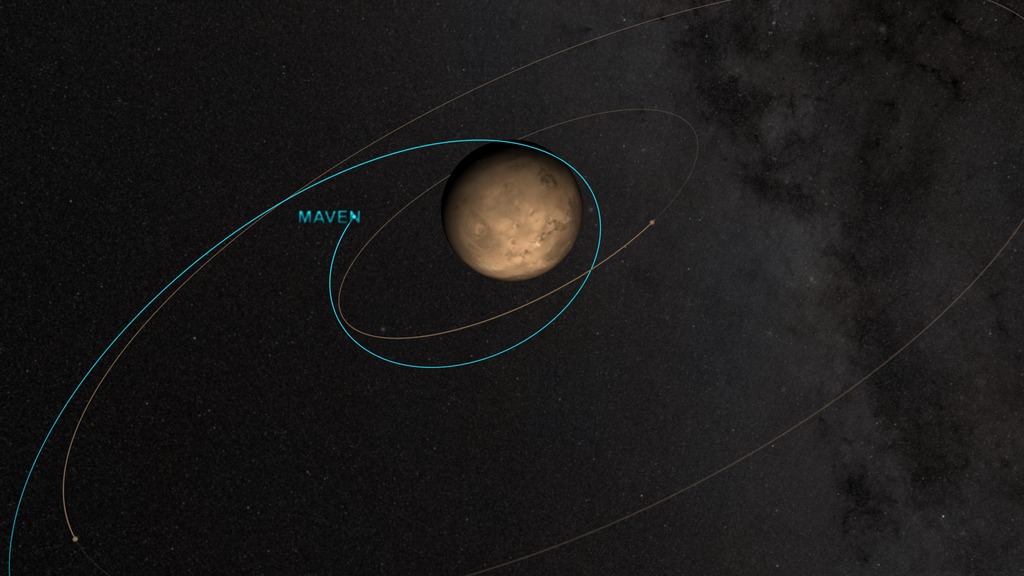First Map of Mars Electric Currents
MAVEN data have enabled the first map of the electric current systems (blue and red arrows) that shape the induced magnetic field surrounding Mars.
Credit: NASA/Goddard/MAVEN/CU Boulder/SVS
Universal Production Music: “A Lucid Dream” and “Shimmer Oscillations” by James Joshua Otto
Watch this video on the NASA Goddard YouTube channel.
Complete transcript available.
Five years after NASA’s MAVEN spacecraft entered into orbit around Mars, data from the mission has led to the creation of a map of electric current systems in the Martian atmosphere. Unlike Earth, Mars lacks a protective global magnetic field to shield its upper atmosphere from the solar wind. Instead, the solar wind crashes into the upper atmosphere and its magnetic field lines drape around the planet. This creates an induced magnetosphere that tugs on charged particles in the Mars upper atmosphere, generating electric currents. Now, MAVEN’s detailed measurements of the magnetic environment surrounding Mars have revealed the shape of these electric currents for the first time.
Read the science paper in Nature Astronomy.

In this data visualization, the yellow arrow at upper left shows the direction of the solar wind at Mars, while cyan lines depict the solar wind magnetic field observed by MAVEN. Blue and red arrows indicate the direction of electric currents in the Mars upper atmosphere, which were derived from several years of MAVEN data. These currents provide structure for the magnetic environment surrounding Mars, including the solar wind bow shock (gray outer paraboloid) and the Mars induced magnetosphere (green inner paraboloid).
Credit: NASA/Goddard/MAVEN/CU Boulder/SVS
For More Information
See the following sources:
Credits
Please give credit for this item to:
NASA/Goddard/MAVEN/CU Boulder/SVS
-
Producer
- Dan Gallagher (KBR Wyle Services, LLC)
-
Data visualizers
- Cindy Starr (Global Science and Technology, Inc.)
- Tom Bridgman (Global Science and Technology, Inc.)
- Greg Shirah (NASA/GSFC)
- Horace Mitchell (NASA/GSFC)
-
Videographer
- John Caldwell (Advocates in Manpower Management, Inc.)
-
Editor
- Dan Gallagher (KBR Wyle Services, LLC)
-
Scientists
- Robin Ramstad (University of Colorado Boulder)
- David Brain (University of Colorado Boulder)
-
Science writer
- William Steigerwald (NASA/GSFC)
-
Animators
- Walt Feimer (KBR Wyle Services, LLC)
- Jonathan North (USRA)
- Chris Smith (USRA)
- John Blackwell (LPI)
-
Support
- Tom Mason (LASP)
- Bruce Jakosky (LASP)
-
Technical support
- Aaron E. Lepsch (ADNET Systems, Inc.)
Release date
This page was originally published on Monday, May 25, 2020.
This page was last updated on Monday, December 11, 2023 at 11:46 AM EST.
![Learn about the “disappearance” of the solar wind at Mars that was witnessed by MAVEN – an event last seen nearly a quarter-century ago at Earth.Complete transcript available.Universal Production Music: “Space Museum” by Harry Gregson Williams [BMI], Atmosphere Music Ltd. [PRS]; “Currents and Crime Scenes” by Dylan Matthew Love and Harry Gregson Williams [BMI], Atmosphere Music Ltd. [PRS]Watch this video on the NASA Goddard YouTube channel.](/vis/a010000/a014400/a014477/MAVEN_Solar_Wind_Disappear_V4.jpg)
